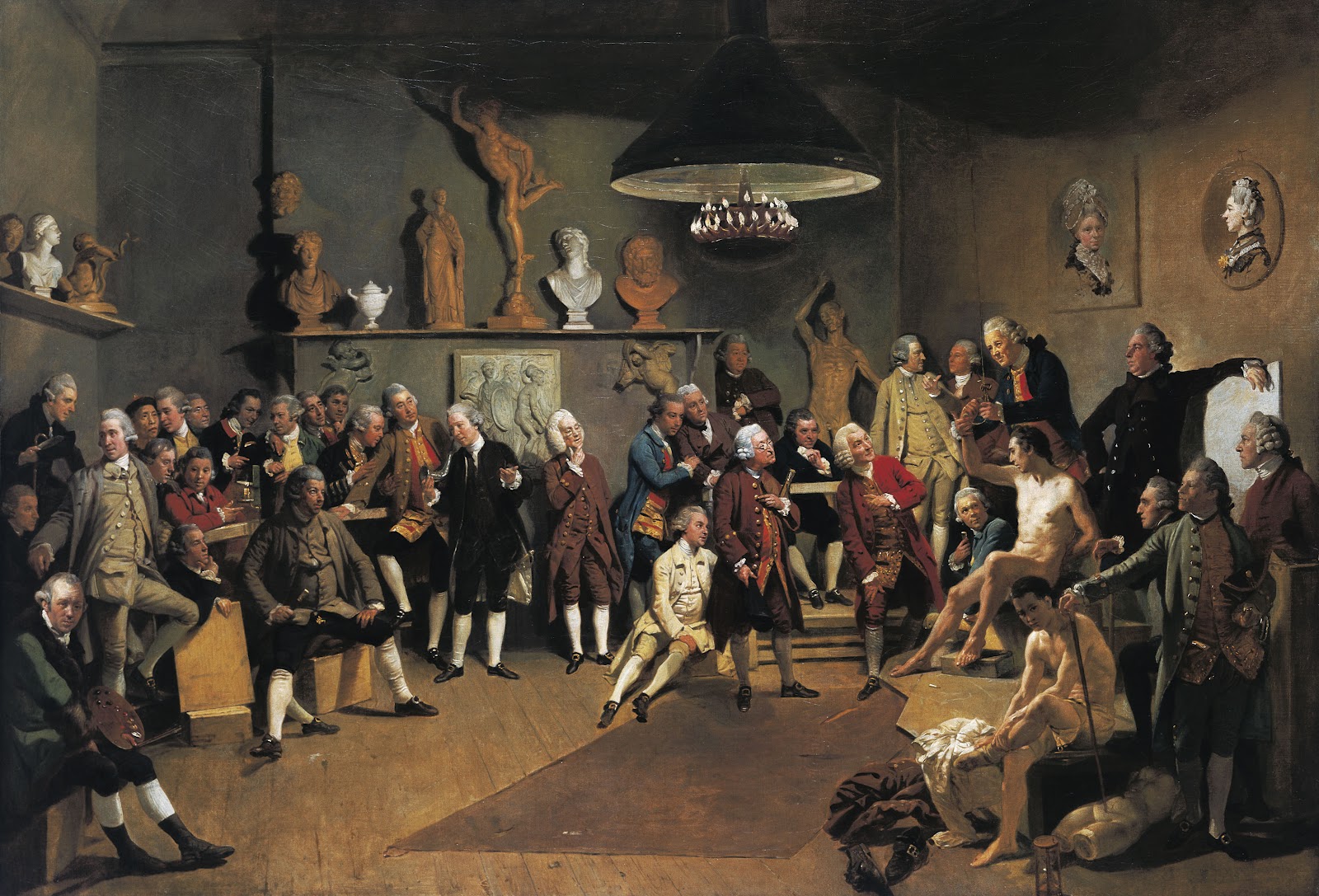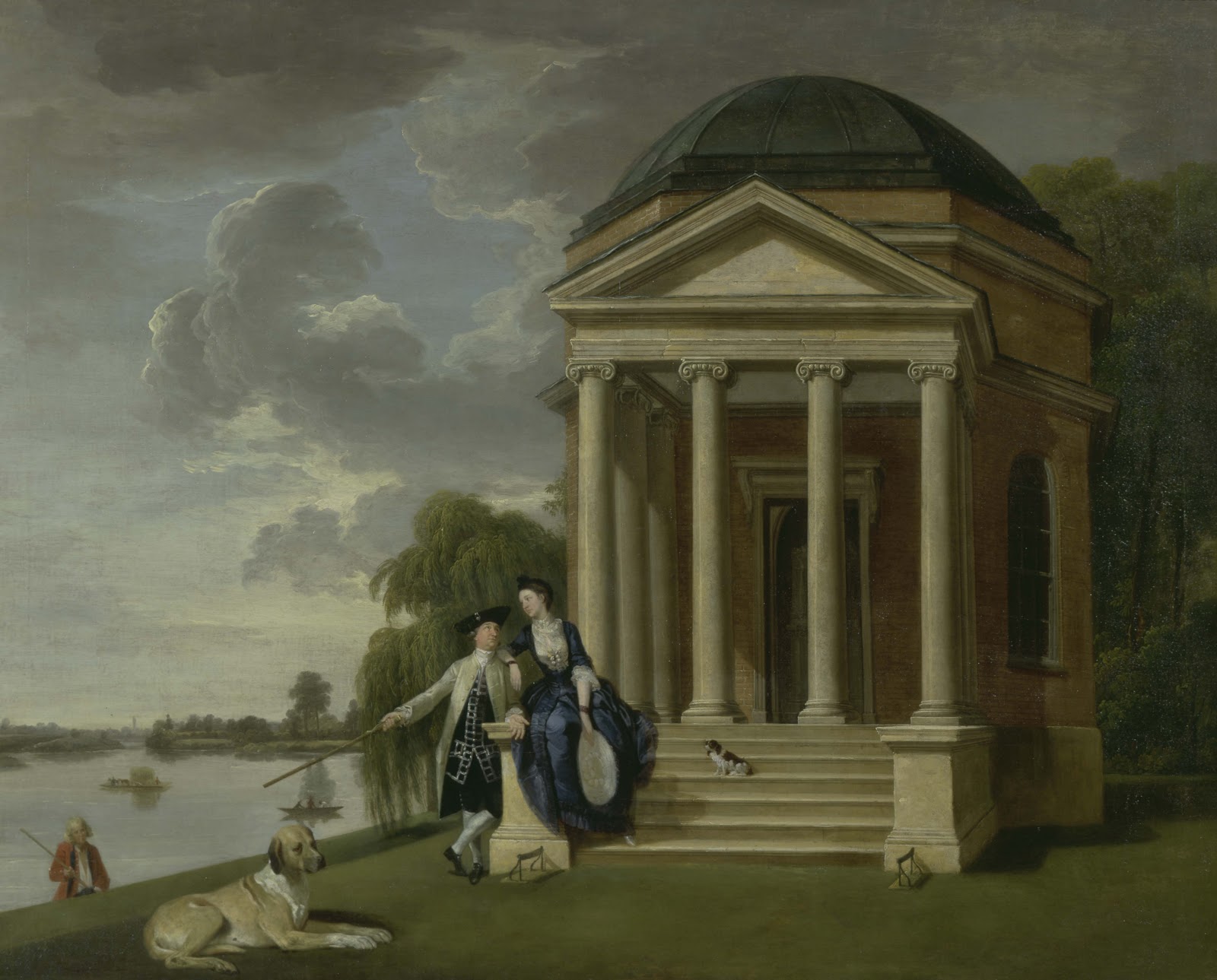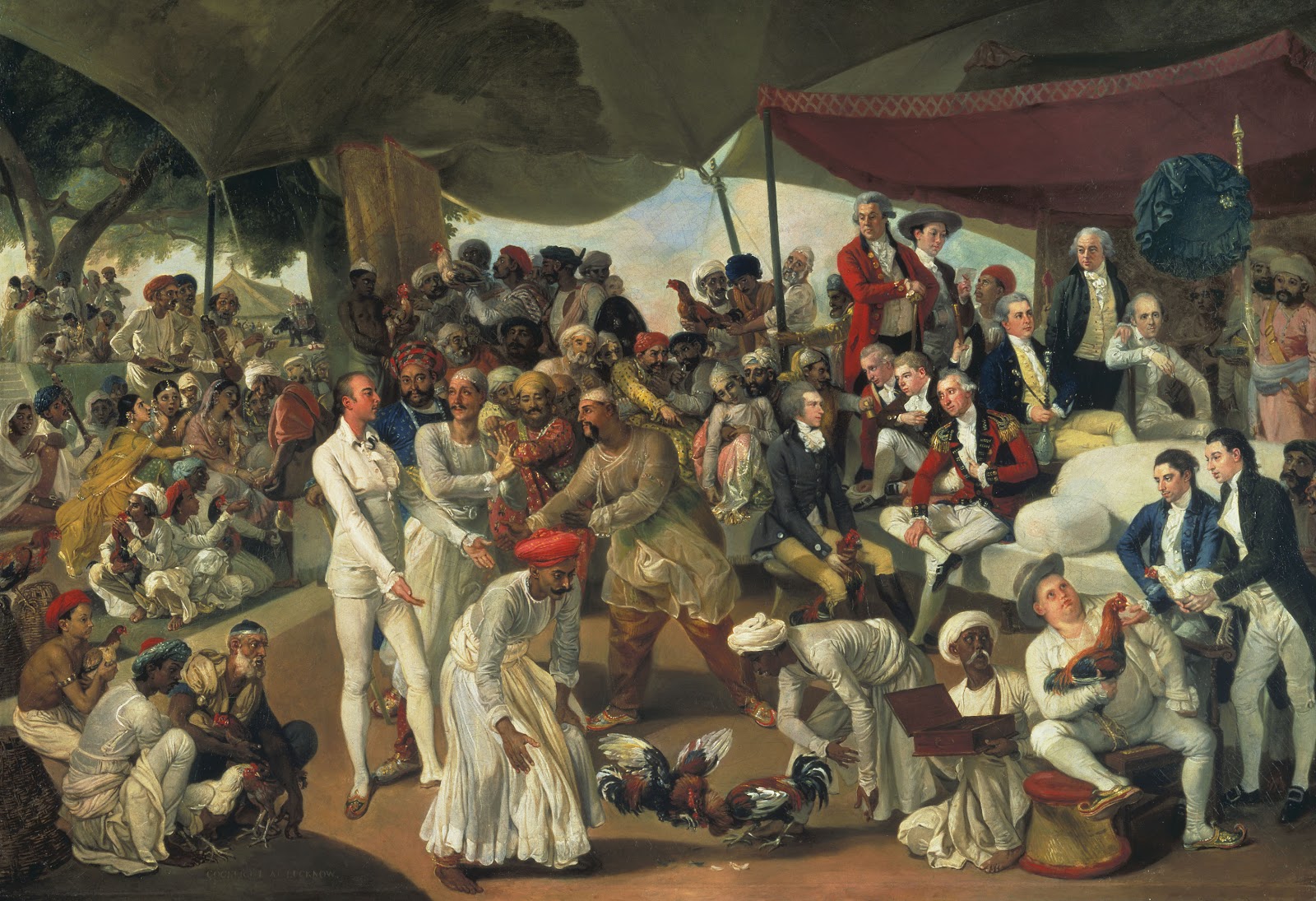10/03/12
Johan Zoffany RA: Society Observed
Royal Academy of Arts, Sackler Wing
10 March – 10 June 2012
“Zoffany has come home!” says MaryAnne Stevens, Director of Academic Affairs at the Royal Academy of Arts and organising curator of the first exhibition of the works of Johannes Josephus Zauffaly (1733-1810), better known as Johan Zoffany, since 1977. And, indeed, Zoffany was a very early member of the Academy, personally nominated by King George III himself a year after its founding, thus bypassing the election process to which he refused to submit. A great deal of research has been carried out on the German-born painter in the past 35 years, and this forms the basis of this new exhibition (and its accompanying catalogue), which, although relegated to the Sackler Wing (whilst Hockney continues to fill the main galleries downstairs), features over 60 oil paintings, alongside a selection of drawings and prints, some of which have rarely or never been exhibited before.

The exhibition is arranged thematically, and, according to its curator Martin Postle, “you get many different Zoffanys as you walk through this show.” A peripatetic artist with an “exceptional Wanderlust,” visitors are led on an “extraordinary adventure through his art and life.”

Born near Frankfurt in 1733, Zoffany trained as history painter, working with largely mythical (Greek) and Biblical subjects. However, when he came to England in 1760, he failed miserably to promote himself in this genre, and, his success plummeting, he turned to drawing portraits in pubs. Happily, his talent was recognised, and he was taken under the wing of Benjamin Wilson who, two years later, introduced him to the celebrated actor and theatre manager, David Garrick, an event which changed the course of his career. Taken to Garrick’s family home in Hampton, Zoffany painted four family portraits, including Mr and Mrs Garrick by the Shakespeare Temple at Hampton (ca. 1762), which so pleased its subject, that the artist was invited to begin working as a theatre portraitist. From his historical training, Zoffany had a good understanding of narrative, and knew how to capture moments of drama. This skill shone through in his theatre paintings, in which he often captured the most popular and exciting moment of the play, as, for example, in Samuel Foote as Major Sturgeon and Hayes as Sir Jacop Jollup in ‘The Mayor of Garret’ (1763-4), which depicts the comic highpoint at which, intending to draw a sword, the protagonist instead pulls out his walking stick!
Through his work with the stage, Zoffany grew to understand more of English society, but, despite the cosmopolitan scene, he still gravitated towards the Royal Court of George III and his German queen, Charlotte of Mecklenburg-Strelitz. Zoffany himself had been educated alongside German princes, and so, although quite often badly behaved, he nonetheless knew about etiquette. His portraits for the Royal Court are unique in their portrayal of the family within domestic settings and showing their human face. George III (1771), for example, depicts the king as a soldier rather than a monarch, emphasising his devout patriotism.

It was Queen Charlotte who asked Zoffany to travel to Florence and record the celebrated works of art on show in the Grand Ducal Gallery of the Uffizi (also known as the Tribuna). The resulting work, the rambunctious The Tribuna of the Uffizi (1772-77), is deemed by many to be his masterpiece, although its “improper” satirical elements, including the portrayal of painter, engraver and caricaturist Thomas Patch, who had been thrown out of Rome for his homosexual activity, pointing not, as expected, at the Venus de Milo, but rather at a sculpture of two male wrestlers, led to George III’s reluctance to buy the work (he eventually did, but it was relegated to Kew Palace), and, effectively, signaled the end of Zoffany’s court painting career.

Nevertheless, he went on to travel to India, according to one of his friends, “to roll in gold dust,” where he was picked up by Governor General, Warren Hastings, and introduced not only to the tea-drinking society of British India, but also the more native aspects of Indian India, as shown in the atmospherically lively Colonel Mordaunt’s Cock Match (ca. 1784-86). As Martin Postle puts it, this was not so much a passage to India, as a passage through India.

Returning to England in 1789, Zoffany continued as an active Academician, but his health slowly declined, and, ultimately, he developed dementia. The exhibition closes, as it opens, with a self-portrait, once again showing his intensity of observation. This work, Self-Portrait with Hookah (1800-03) is possibly his final portrait, and is a far cry from the Hogarthian Self-Portrait with Friar’s Habit (13 March 1979), painted on his 46th birthday, in which he scandalously hangs 2 condoms next to a string of rosary beads on the wall behind him!
It seems perhaps true then that there are many Zoffanys on show here, but, even if the exhibition is taken as a consistent progression through his life and works, there is certainly not a dull moment along the way.
Images:
Johan Zoffany
The portraits of the Academicians of the Royal Academy, 1771-2
Oil on canvas
100.1 x 147.5 cm
The Royal Collection
The Royal Collection Copyright 2011, Her Majesty Queen Elizabeth II
Johan Zoffany
Mr and Mrs Garrick by the Shakespeare Temple at Hampton, c. 1762
Oil on canvas
109.9 x 134.6 cm
Yale Center for British Art, Paul Mellon Collection
Johan Zoffany
Queen Charlotte, 1771
Oil on canvas
163.8 x 137.5 cm
The Royal Collection, Her Majesty Queen Elizabeth II
Photo The Royal Collection copyright 2011, Her Majesty Queen Elizabeth II
Johan Zoffany
The Tribuna of the Uffizi, 1772-7
Oil on canvas
123.5 x 155 cm
The Royal Collection, Her Majesty Queen Elizabeth II
Photo The Royal Collection copyright 2011, Her Majesty Queen Elizabeth II
Johan Zoffany
Colonel Mordaunt’s Cock Match, 1784-86
Oil on canvas
103.9 x 150 x 2 cm
Tate, London: purchased with assistance from the National Heritage Memorial Fund, the National Art Collections Fund, the Friends of the Tate Gallery and a group of donors 1994.
Photo copyright Tate, London, 2011
This exhibition is co-organised by the Royal Academy of Arts and the Yale Center for British Art.